
Doug Levy’s work comes from a different side of the spectrum than recent posts, and a different location as well. Up near our sometimes snowy Northeast location, Doug shoots in a multitude of genres, from weddings to corporate photography to portraiture, Doug’s quality across his wide array of subject matter belies the typical generalist portfolio. We were lucky enough to be able to talk to Doug recently about his various photo endeavors and business.
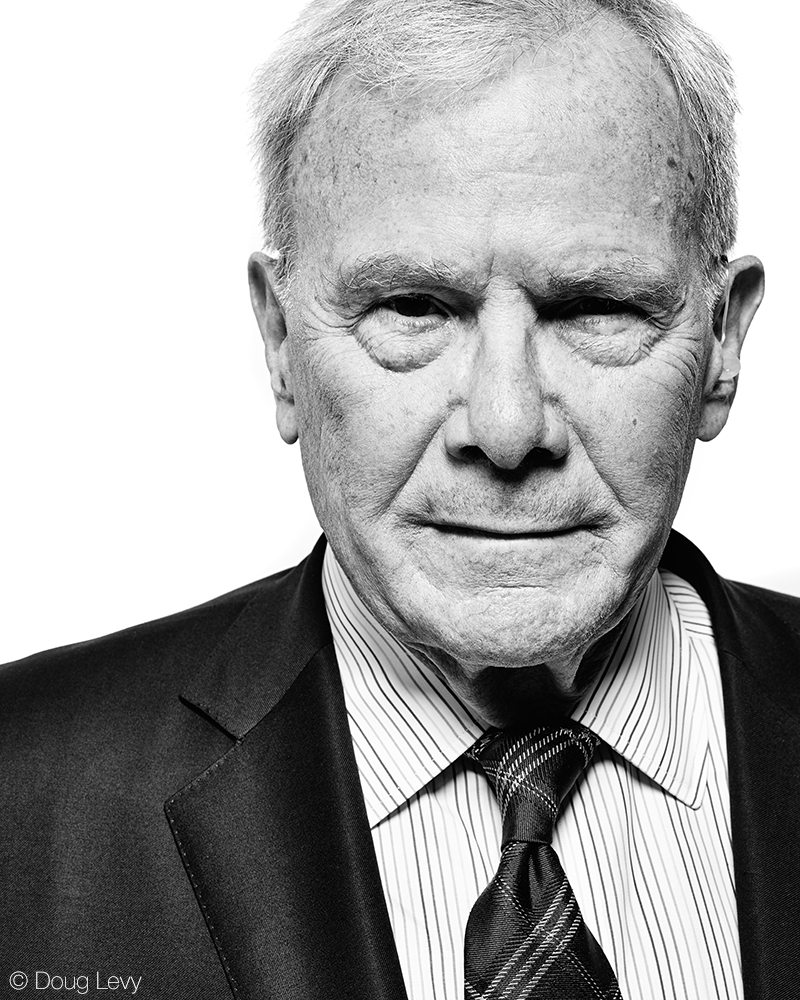
© Doug Levy | Credo 40 | H5X | Hasselblad HC 80mm
How did you get into photography originally? What brought you to the level you’re at now, what was the path from when you first picked up a camera to now?
I bought my first camera in 2006 – a Nikon D70s. I was umpiring minor league baseball at the time, and we went on strike to start ’06 season, so I started saving money from my offseason job at a local Gold’s Gym to pay for the health insurance baseball was threatening to cut off. The strike was settled with 3 days to go before the $1,000 bill would have been due, so I went and spent all the money I’d saved on a D70s and 18-70mm lens.
The instant learning curve of digital photography, combined with the schedule I kept as an umpire (a bad day at work was 4 hours at the ballpark), allowed me to learn quickly and in the winter of 2007 I started freelancing for a local newspaper shooting mostly high school sports.
I continued umpiring and shooting in the offseason until 2009. That season I was struck in the face with a bat while working behind the plate in Harrisburg – and realized maybe I didn’t want to umpire anymore (and travel 225+ days a year).
I’ve photographed about 150 weddings since then, and in the past 2-3 years an increasing amount of headshot and commercial work.
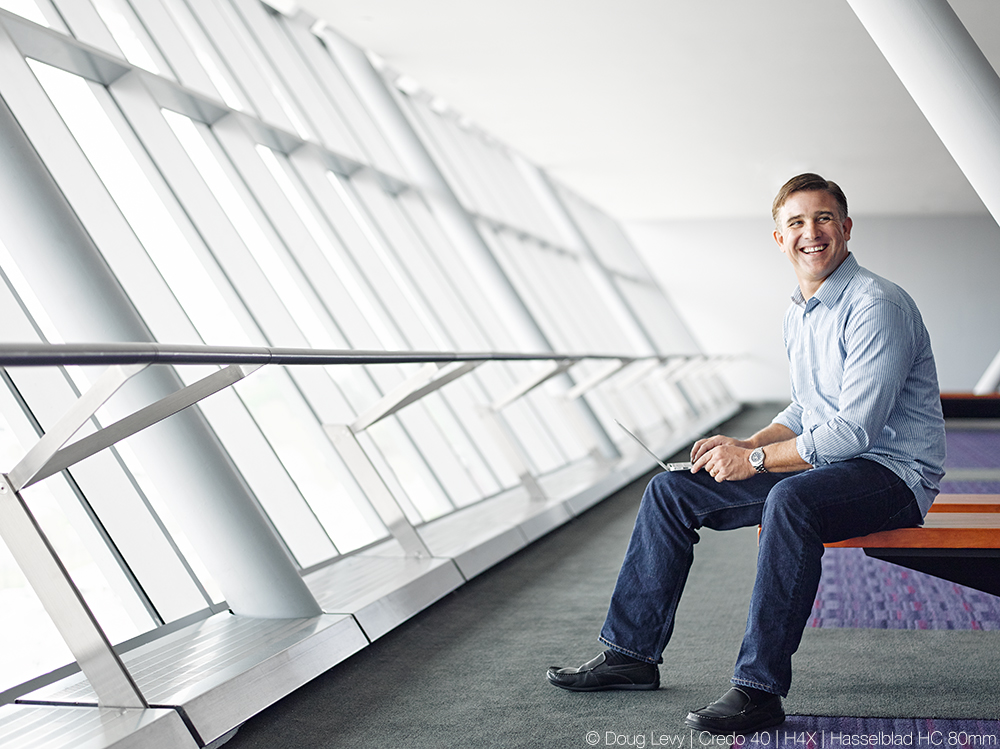
© Doug Levy | Credo 40 | H4X | Hasselblad HC 80mm
As a shooter not in one of the big markets (NYC, LA, Miami) do you find doing almost only one type of photography (weddings) to be limiting to your potential client base, or does it allow you to really concentrate down and show the quality of your work over generalist competition?
My business is about 2/3 weddings, with the rest split fairly evenly between editorial, commercial and headshots. I don’t think being in New England has hurt at all. For weddings there are so many phenomenal venues within 2 hours of my house in addition to Boston in cities like Portsmouth, Portland, Newport all of Cape Cod and the Berkshires.
On the editorial side, at the portfolio reviews at Photo Plus last year a photo editor said to me, “We have plenty of jobs from my magazine that we can’t afford to send someone from New York up to New England for – your goal should be to be the New England guy for New York and L.A. magazines.” She went on to say that beyond a cover shoot, they rarely have the budget to fly people around for shoots, but she was right – I’ll shoot those front of the book and small features every day. A recent shoot for Philadelphia Magazine up in New Hampshire is a great example of that, and that’s been a goal of mine the last year – to be the New England guy large magazines call when they need someone up this way.
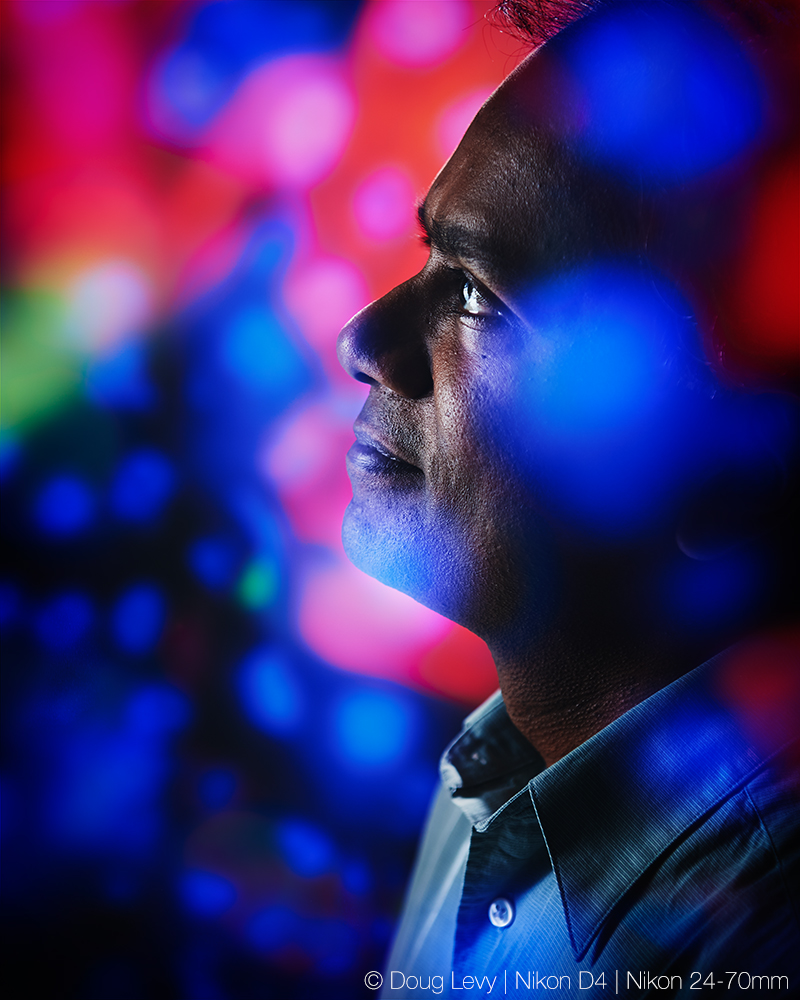
© Doug Levy | Nikon D4 | Nikon 24-70mm
Recently you shared a project shooting the Genzyme runners, who train throughout the winter and raise money for NORD. This is a great annual project; can you tell us more about it and others that are a little more outside the normal scope of your portfolio?
Photographing the marathon for Genzyme has been an ongoing project that I’ve worked on since 2011. Genzyme has been a client of my friend David Parnes’s for many years, and we’ve tag teamed their marathon coverage for five years now. It’s definitely David’s baby, but he’s been kind enough to involve me with the project every year. This year, in addition to Boston, the Genzyme team had a group of runners running the Providence marathon (both the full and half) as well, and we wanted to find a way to kick things up a notch beyond our typical race coverage.
Genzyme has an employee who lives walking distance from the Boston starting line in Hopkinton, and the plan was to setup in her driveway and make portraits of each runner as they came to the pre-race breakfast she hosted. Mother Nature didn’t cooperate though, and we ended up shooting in a tiny hallway off of her kitchen. We had 1-2 minutes with each person and ended up photographing 50 runners between the two races. For the Providence day of the shoot we were in a local hotel near the starting line and ended up using a reflector to simulate the fill light we’d gotten off the hallway walls.
Technically, the setup was the same for both days of shooting, and black and white was the plan the entire time. We used a 22” Mola Demi beauty dish with the diffusion sock and an Elinchrom Ranger RX AS Speed pack. They were all shot with the Leaf Credo 40 and my H5X with the Hasselblad 80mm. We used a second ranger behind the large reflector we set up as a background to ensure we were able to blow it out to white.
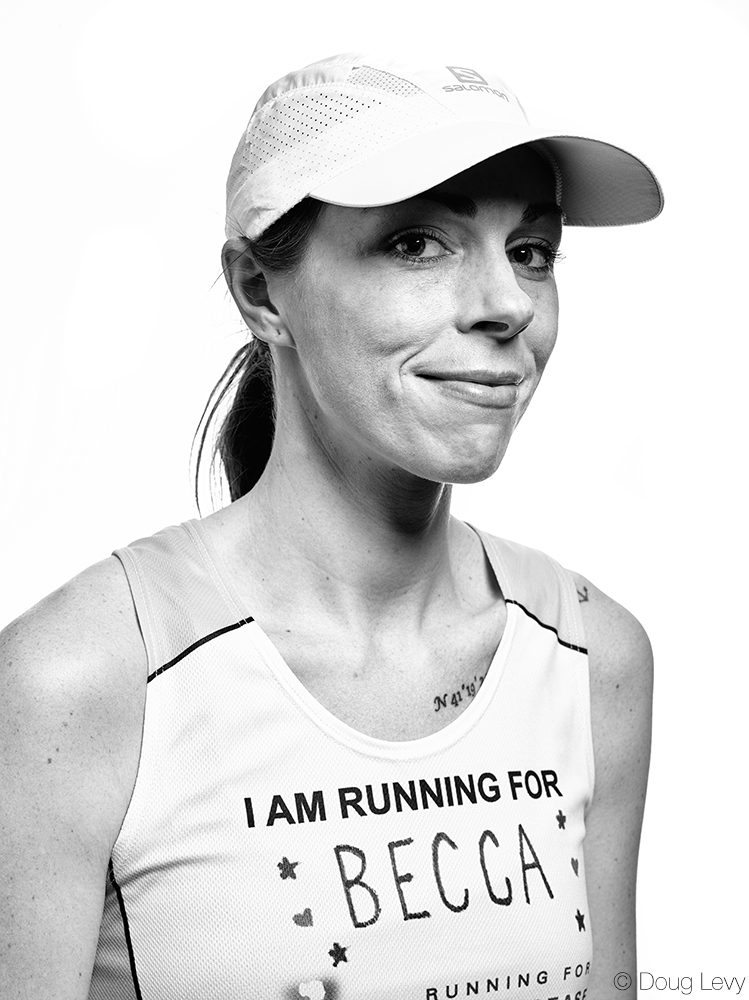
© Doug Levy | Credo 40 | H5X | Hasselblad HC 80mm
Why Capture Integration? What made you choose us?
Proximity and customer service. You’d just opened your Manchester location a few months before I purchased my Credo back and the ability to pick up the back and get a hands-on walkthrough was invaluable. From a customer service standpoint, the only other company that’s ever approached the level of responsiveness and service you guys provide are the folks that custom designed my website at rawfolio. You both prove everyday that the least expensive options to something often are rarely the way to go. I can’t count the number of times I’ve called Josh with a Capture One question while editing photos on a deadline and he’s either been available immediately or called me back within 10 minutes.
Better put – I’ve always thought of myself as a technical shooter…until I met you guys. The entire CI team understands the needs of working professionals and there is so much value there that you can’t put a dollar figure on. Just knowing that you’ll always get a person on the phone and not a machine, and that that person will know your gear better than you do provides an immense amount of peace of mind and confidence for the working pro.
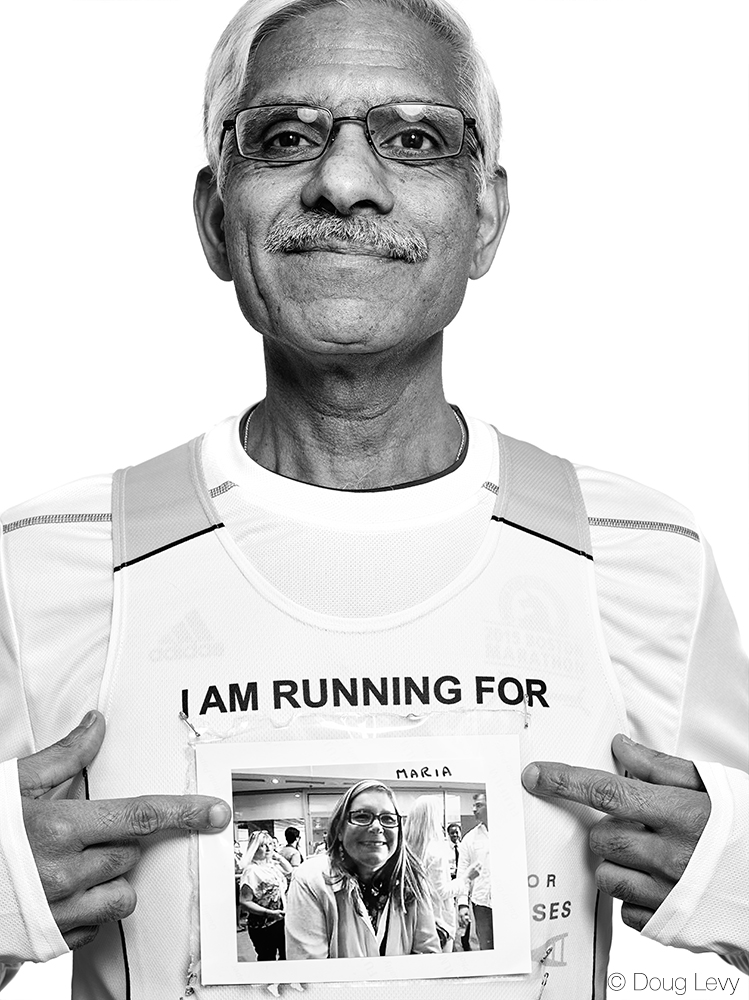
© Doug Levy | Credo 40 | H5X | Hasselblad HC 80mm
Why did you go with medium format for your weddings? While not unheard of, many shooters shy away from them, wanting to stick with 35mm for ease or other factors. What was the allure for you to get into the setup you did?
I’m still shooting about 90-95% of my weddings with my Nikons, but this year have worked the Hasselblad in for more and more of my portrait work. I bought into a medium format system for all of my non-wedding work, for which I’d say the percentage is probably about exactly swapped – for that stuff I’m only using the D810 when I need to exceed 200 ISO.
The initial allure was the flash sync, sharper lenses and resolution, but the best surprise and reason I’m most excited about using the MF setup these days is the color, especially the skin tones. The Credo files just come in so clean without any of the added Canon reds that I see in the files from my second shooters using 5D’s and 1DX’s, and the sometimes greenish/magenta tint of the Nikon files.
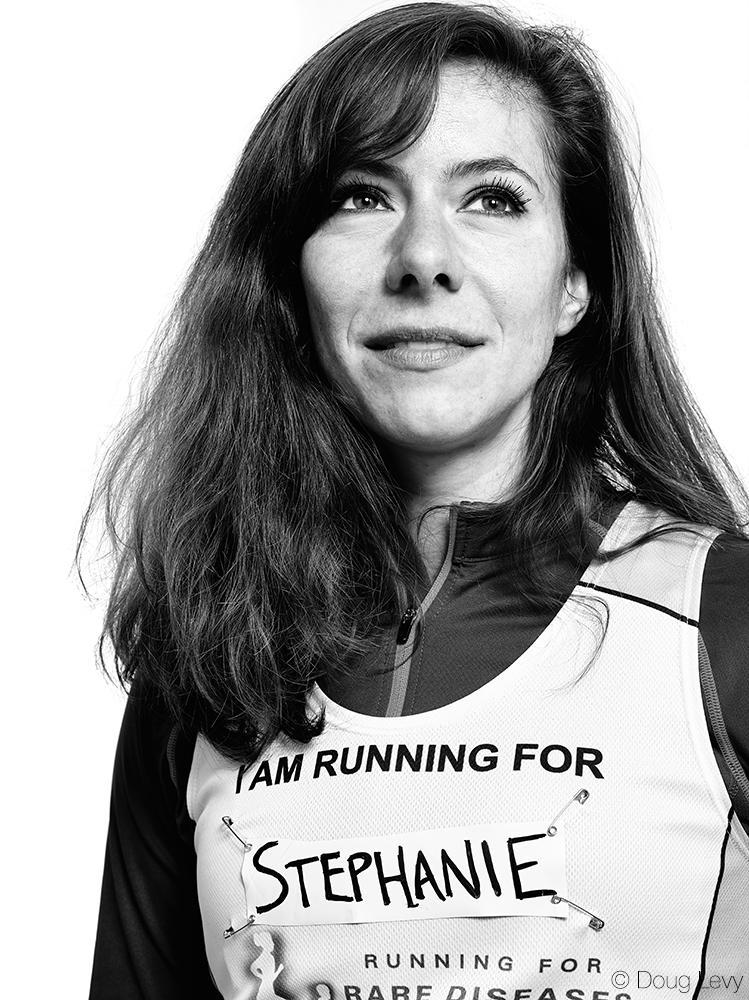
© Doug Levy | Credo 40 | H5X | Hasselblad HC 80mm
It’s interesting to see the differences between the different genres; where a lot of commercial shooters would have an instagram link, you have a Pintrest link. Do you find yourself getting work specifically through Pintrest, or getting more marketing share that way? Please tell us a little more of how you leverage Pintrest and other social media mediums with your work.
My wife was the one who first got me into Pinterest – it’s not something I use heavily, but it’s a great resource for brides planning their weddings. I use it more of as a visual bookmark for great images that stand out from around the web though versus a marketing tool. If I had to choose just one social network though, I think I could give them all up save for Instagram. To me, I use Instragram for my editorial and commercial work, and Pinterest and Facebook for sharing wedding work.
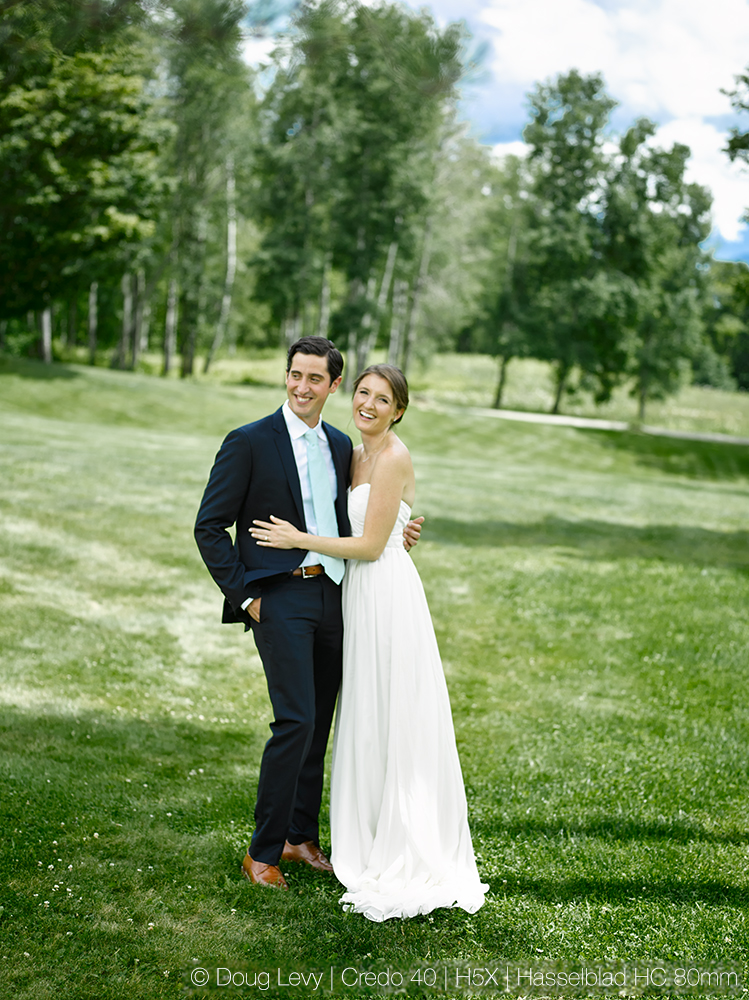
© Doug Levy | Credo 40 | H5X | Hasselblad HC 80mm
As a followup, have you seen your photography change with trends in Pintrest boards and wedding conventions? It’s definitely an industry that seems to be even more closely tied to outside trends, with such a close connection to your potential clients. Do you find yourself seeking out your competition to see what others are doing, or sticking to your own vision and not letting others in to cloud it?
No – a couple of years ago I made a conscious decision to stop following other wedding photographers work – you can’t help but be influenced by (or intimidated by it) it and I want my work to be free of that. I don’t want my wedding work to be trendy, and while I consume a ton of great photography, aside from a few local wedding shooter friends who I check-in on to see what they’re up to, it’s 99% from commercial and editorial shooters. Aside from whatever time we spend on portraits at a wedding, typically 15-30 minutes, my work is reactive. As much as possible I try to not influence the events of a wedding day – I don’t think that’s my job – my job is to show you what it felt like to be a guest at that wedding, not to push my ideas onto the client. I think that’s largely what gets me hired for weddings – clients love that they know that I’m going to have as small of a footprint as possible and always defer to them when it comes to the role they see photography playing in their day. I always tell couples that aside from whatever time we spend on portraits, my goal is for them to think I went home after we shoot portraits, but then to see the images and realize I was actually there for everything.
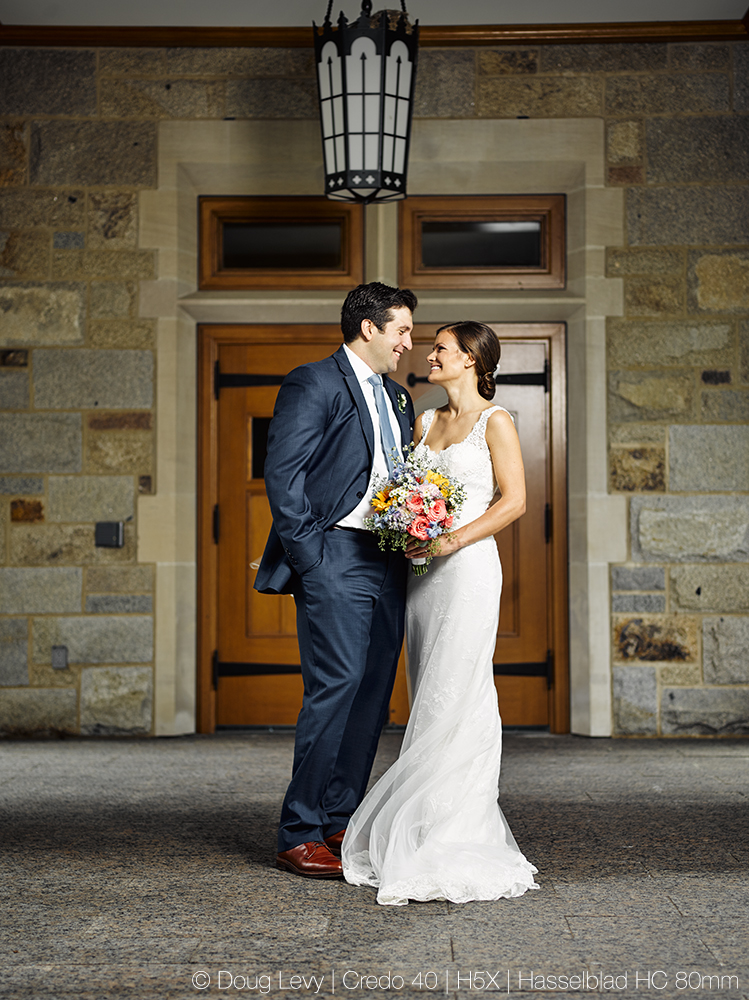
© Doug Levy | Credo 40 | H5X | Hasselblad HC 80mm
What’s currently in your bag? What are you shooting with, what are the go to essentials on your sets, or even for when you’re editing or lighting?
Currently, my wedding camera kit consists of:
Nikon D4, D3s, D810 and 14-24, 24-70, 70-200, 50mm, 58mm, 60mm, 85mm lenses with 2 SB-910s and 2 SB-800s.
For portraits I’ll bring my medium format kit, which includes: Hasselblad H5X, with 35mm, 80mm and 120mm lenses.
Lighting-wise, I’m always bringing my “big lights” but don’t always use them. That bag consists of two 1,100 w/s Elinchrom Ranger RX AS Speed packs, one of which I just did a DIY swap for a lithium battery on (which saved 5lbs) and one Profoto Acute B2 600 pack.
For modifiers at weddings I tend to stick with umbrellas because they’re so much faster to setup, and will always bring at least my 42” and 60” umbrellas, but lately I’ve been breaking out my favorite modifier the 39” Elinchrom deep octa.
For my editorial and commercial work, I’ll add the beauty dish, the 74” Elinchrom octa, a 50” square Westcott softbox and 24” square Lastolite box, and a few more umbrellas of various sizes including the huge 7’ Westcott with its diffuser.
If you made me choose though, I think I could do almost all of my work with the two octas and the beauty dish.
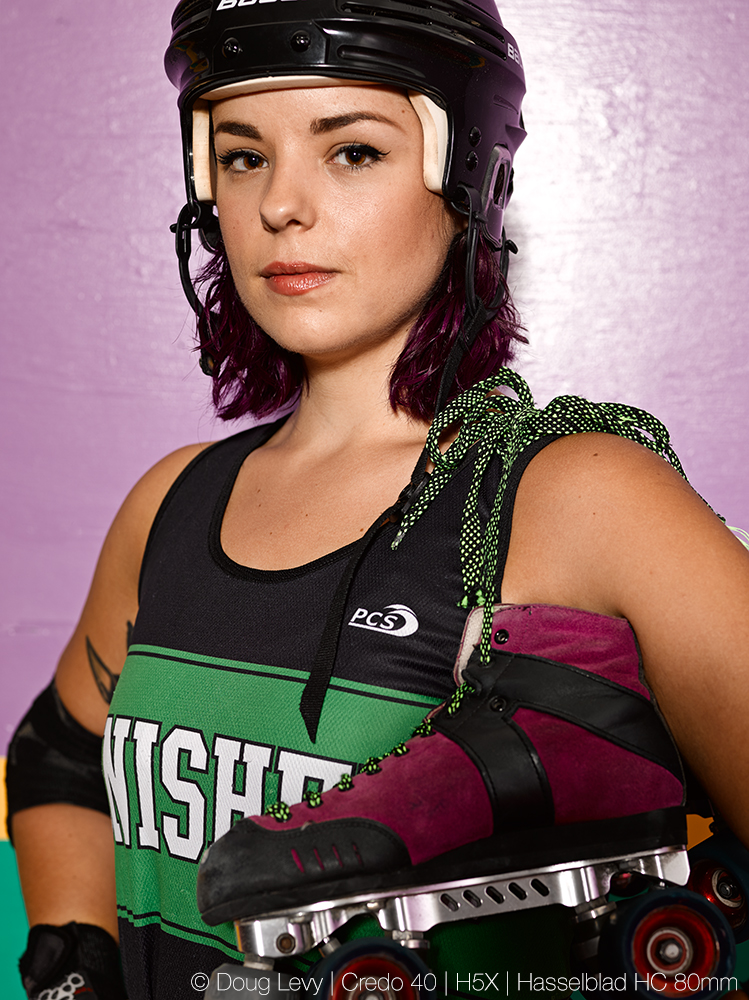
© Doug Levy | Credo 40 | H5X | Hasselblad HC 80mm
You mention that you met your wife at a workshop; are you actively teaching or attending many workshops these days? With the number of classes increasing, do you ever feel like there’s a certain threshold of what you can learn in a group setting like that?
I try and get to 1-2 workshops a year. The last one I actually attended was the Capture Integration Capture One training in Manchester last fall. Before that I went to a Peter Yang class at the Santa Fe workshops in the spring of 2013, which was an amazing experience.
I regularly teach customized lighting workshops to local wedding photographers. The classes are totally customized based on each student’s experience and goals. I used to regularly 2-3x a year do larger classes, but it seemed like you’d be talking about one thing and simultaneously one student would be having a huge lightbulb moment while the student next to them would be bored out of their mind. The way I do them now allows me to spend time on exactly what the students are struggling with an give them concrete takeaways that they can apply directly to their work.
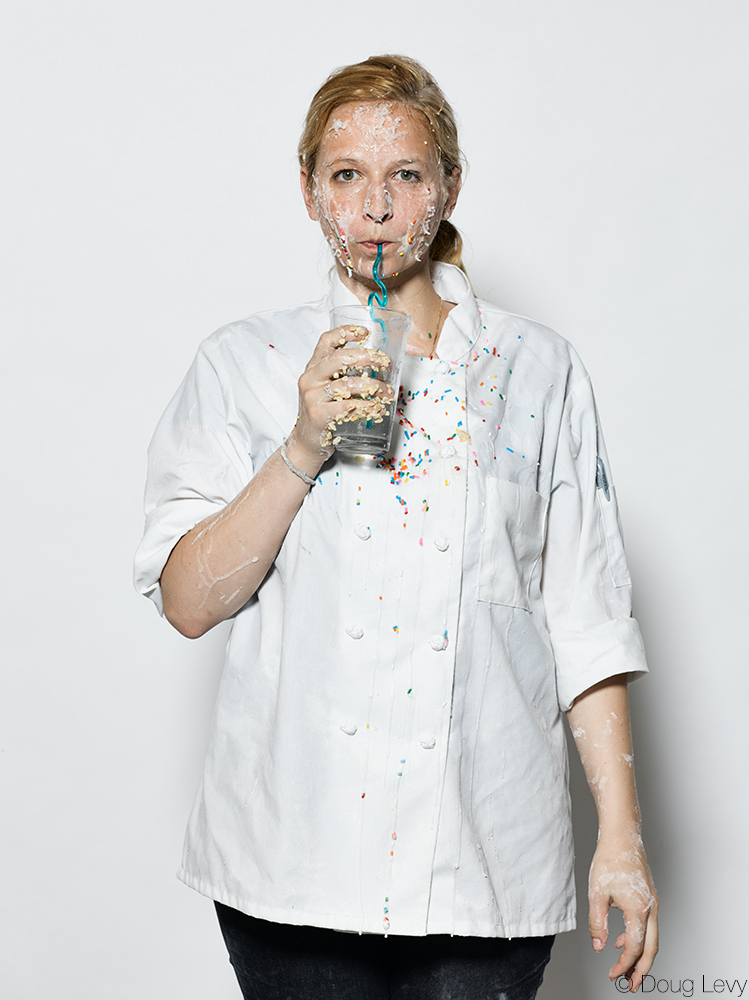
© Doug Levy | Credo 40 | Hasselblad H1 | Hasselblad 120mm
What would you want to see next in the industry? Any big changes to your gear or photography that you want to see in the next year?
Gear-wise, nothing particular. Sometimes I think it might be nice to have a high powered pack that runs off of a battery – I definitely didn’t fully appreciate how much light the Credo needed for ISO 50 if you want to stop down at all when I was just shooting with my 35mm gear. At some point I might swap my other Ranger pack for the lighter lithium battery as well, but I’m at the point where I feel like, “If I can’t make the photos I want with the gear I have, it’s not a gear problem.”
Photographically, I’m literally just trying to make better photos than I made on my last job. I feel like if I can keep doing that I’m in a pretty good place.
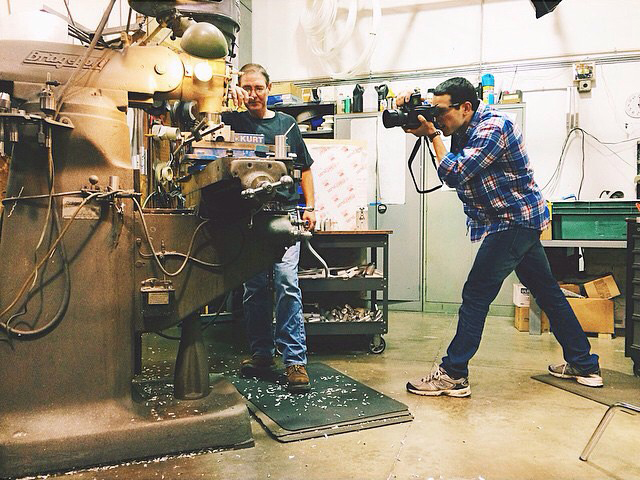
Doug behind the scenes for DownEast magazine.
You can see more of Doug’s work below:
Website: http://douglaslevyphotography.com/
Facebook: https://www.facebook.com/douglaslevyphotography
Instagram: https://instagram.com/douglevy/
Pintrest: https://www.pinterest.com/douglevy